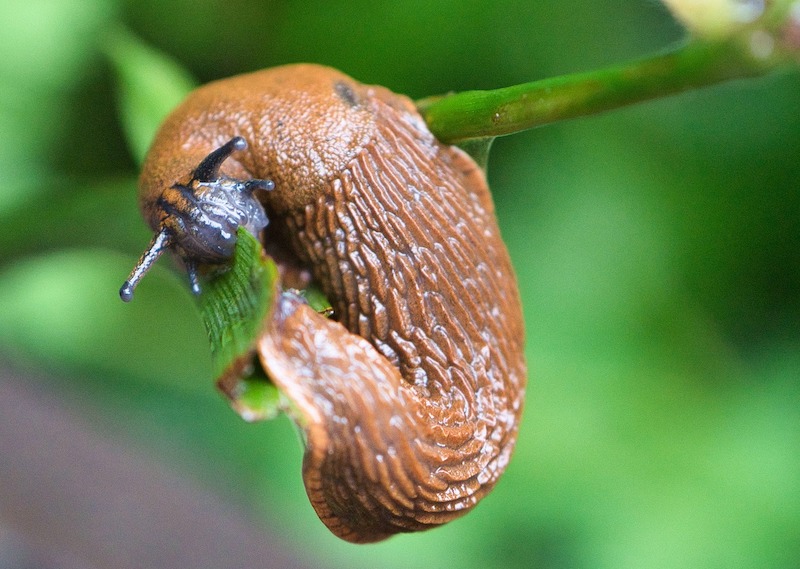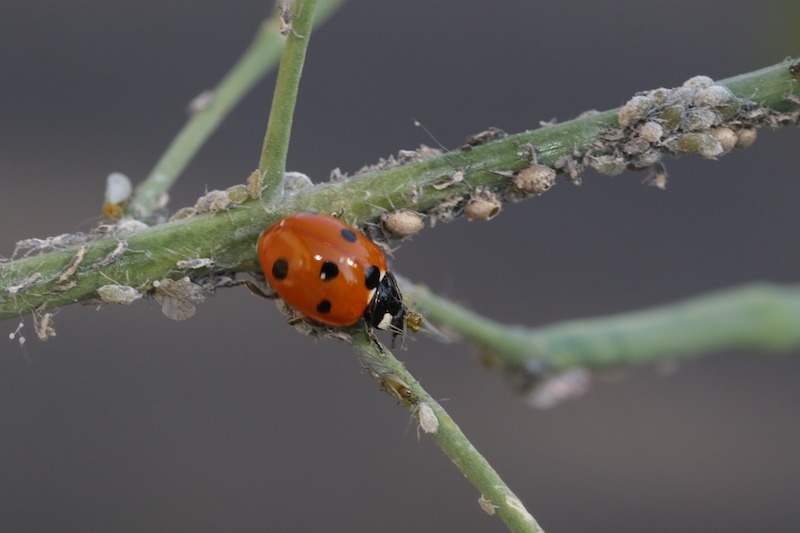Beardtongue is a perennial with lovely tubular flowers. The blooms grow on a central stalk that can reach several feet tall, depending on the variety. Pests will always be an issue to some degree, but Beardtongue is relatively pest-free. The insects that do sometimes target Beardtongue are common and easy to treat. Take preventative measures if you usually battle a specific pest.
Common Beardtongue Pests
Slugs and Snails
Slugs often damage the sword-shaped foliage that grows near the base of a flower spike. Slug damage appears as holes in the leaves and possibly even the flowers. The holes often have an irregular shape and are caused by the slugs eating the plant. Some slugs leave a slimy trail as they crawl along the plant, making it even easier to identify the culprit. Slugs can do a lot of damage and strip the plant of most, if not all, of its foliage.

Treating Slugs and Snails on Beardtongue
The easiest way to treat a slug problem is to remove them while they are in the act. Slugs are active at night, so head out in the evening. Pluck slugs from the plant and dispose of them. Check for them under leaves and on the ground surrounding the plant. Set out a half-full cup of beer to trap and drown slugs or Sluggo or a similar product on the plants to poison the slugs.
Preventing Slugs and Snails on Beardtongue
Remove debris, rocks, and anything else around the Beardtongue plants that can provide shelter for slugs. Eliminating places for them to hide will reduce the risk of them damaging your plants. Slugs like dampness, so water plants in the morning to allow the beds to dry out during the day. Ideally, the beds should be dry by evening when slugs are active.
Aphids
Aphids are tiny insects that suck the sap from healthy plants. Damage from aphids appears as yellow foliage and stunted or dead growth. These winged insects usually appear in clusters. Large colonies of aphids can cause significant damage. Their waste, which appears as a shiny coating on foliage, indicates their presence.

Treating Aphids on Beardtongue
Treat aphids by removing the infested growth as soon as possible. Remove leaves with damage or covered in insects and destroy them to prevent the spread. You can also spray the foliage with a jet of water to wash off the aphids. Apply an insecticidal soap to kill aphids you can’t see or a large infestation.
Preventing Aphids on Beardtongue
Avoid overfertilizing your Beardtongue plant, as lush, tender foliage is more attractive to aphids. Routinely spraying plants with insecticidal soap or horticultural oil can also prevent aphids. Another option is to plant flowering onions, chives, garlic, or marigolds as companion plantings nearby. Aphids typically avoid these plants and neighboring plants.
Thrips
Thrips are winged insects that suck sap from plants. They do damage similar to aphids, but are different insects. Thrip damage appears as yellowing, dying foliage. Leaves will develop stippling or tiny spots. Damaged foliage will eventually fall off the plant.
Treating Thrips on Beardtongue
Treat thrips on Beardtongue by removing and destroying damaged foliage. These are tiny insects, and their eggs are even smaller, so removing everything is not feasible, but getting rid of severely damaged growth is a start. Spray the plant with horticultural oil or insecticidal soap to eliminate the remaining thrips and their eggs.
Preventing Thrips on Beardtongue
Aromatic companion plantings, like basil, chives, garlic, and catnip, can prevent thrips from visiting Beardtongue. If you’ve had problems with thrips in the past, it may be worth proactively spraying plants with horticultural oil or insecticidal soap before an infestation just in case of any lingering eggs.
Beardtongue Pests Chart
|
Pest |
Identifying |
Treating |
|
Slugs and Snails |
Slimy mollusks without shells can be brown, gray, and black; snails are similar but have a coiled shell |
Pluck from the plant and dispose them; slugs are active at night |
|
Aphids |
Small, soft-bodied insects that are usually green but can also be yellow, black, or red |
Remove leaves with damage or covered in insects and destroy them to prevent the spread |
|
Thrips |
Rasping-sucking mouthparts and feathery antennae, can be yellow, brown, or black and have fringed wings |
Remove and destroy damaged foliage |
Sources: "Penstemon." University of California Agriculture and Natural Resources. ucanr.edu
 |
Author Alison Cotsonas - Published 05-03-2023 |
